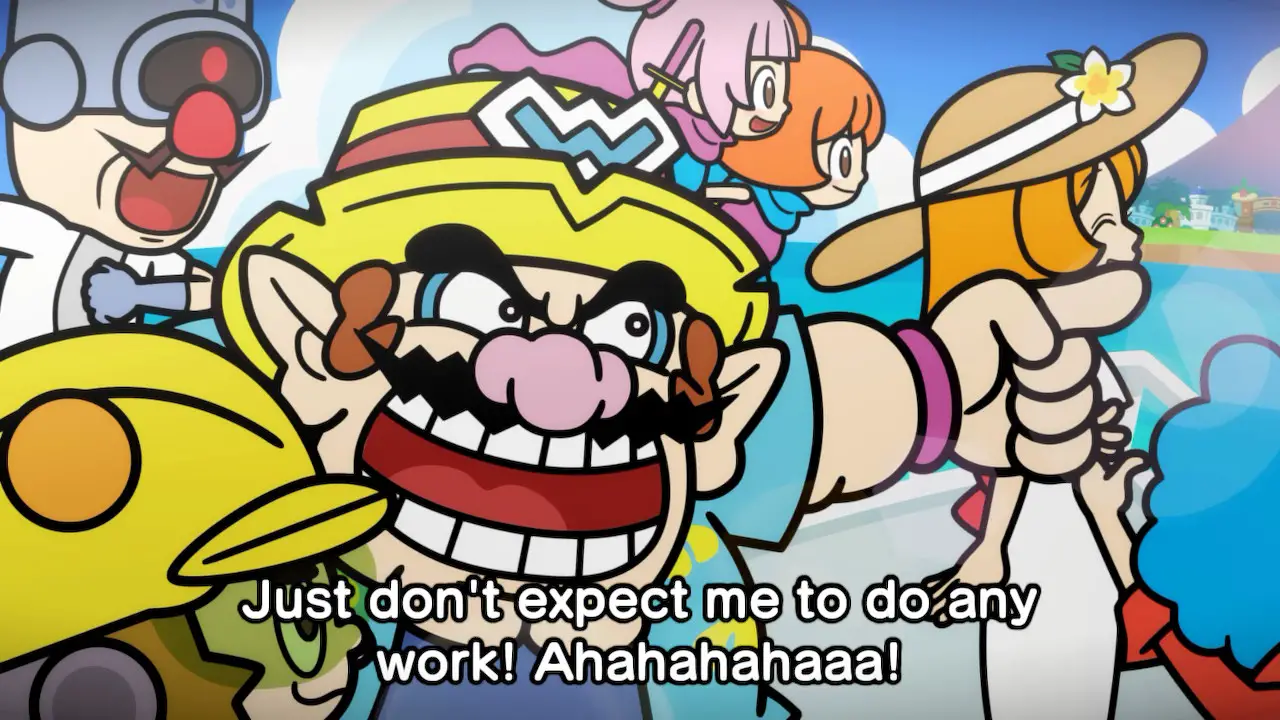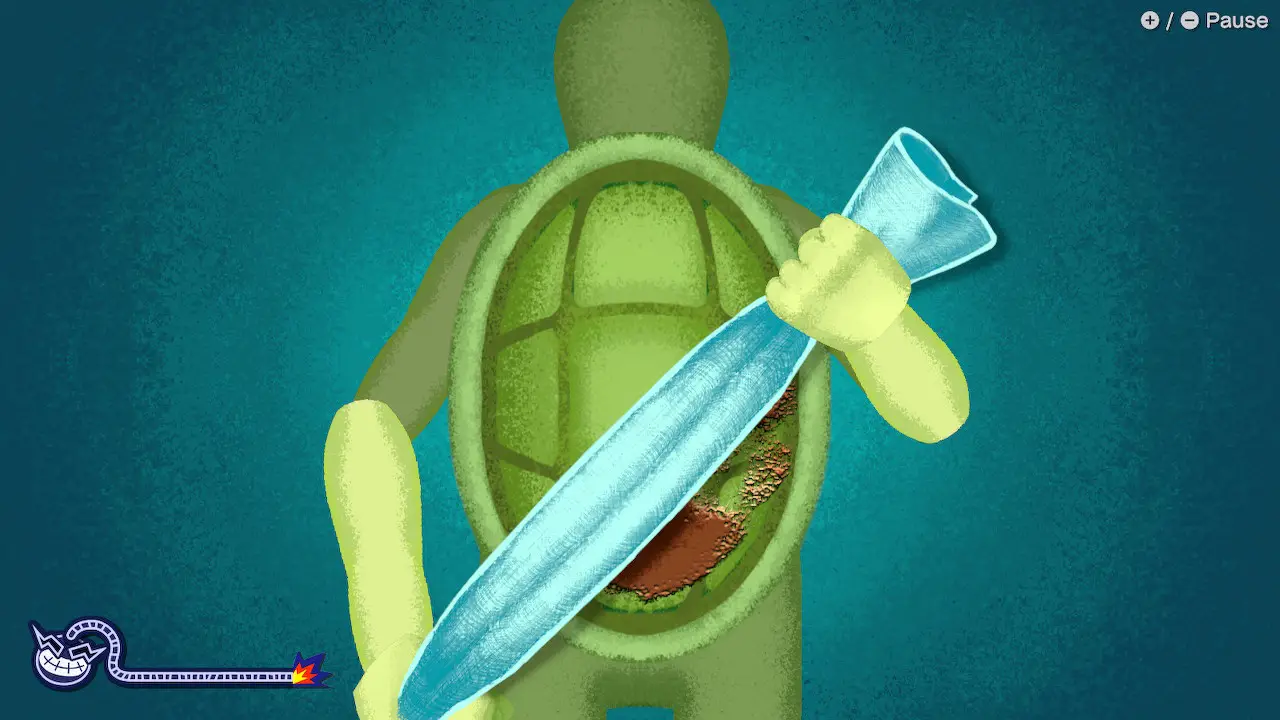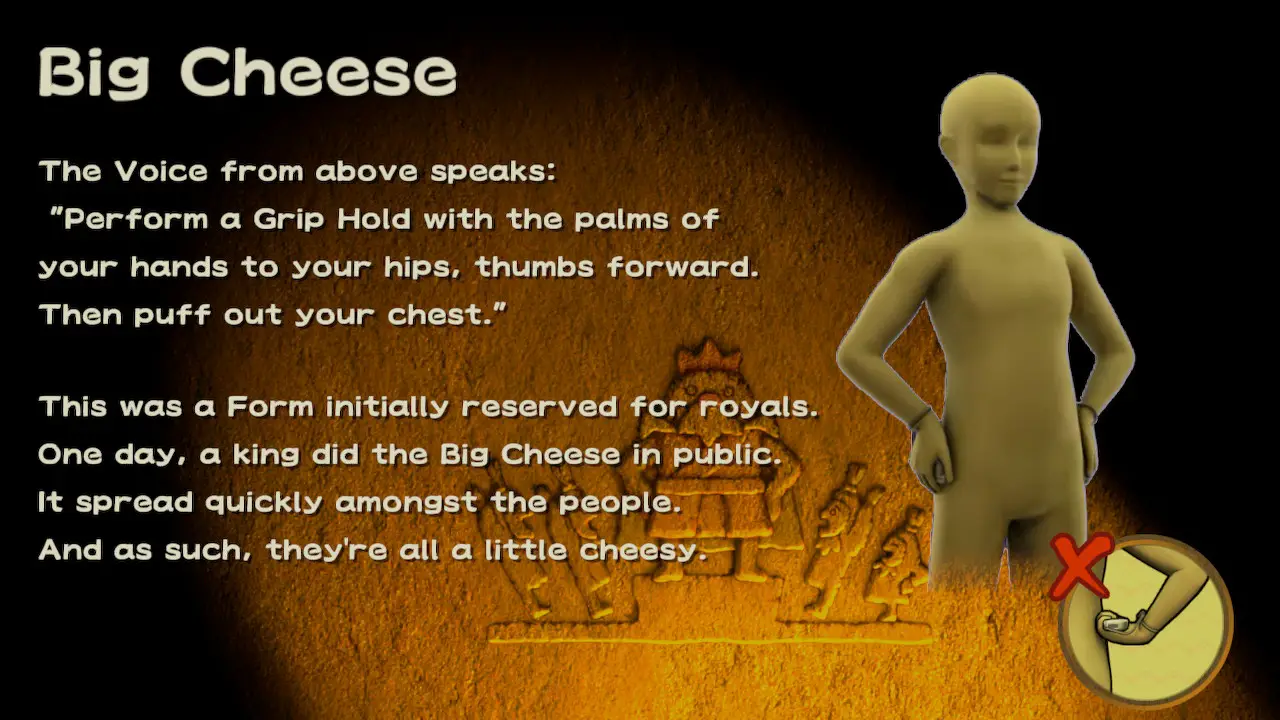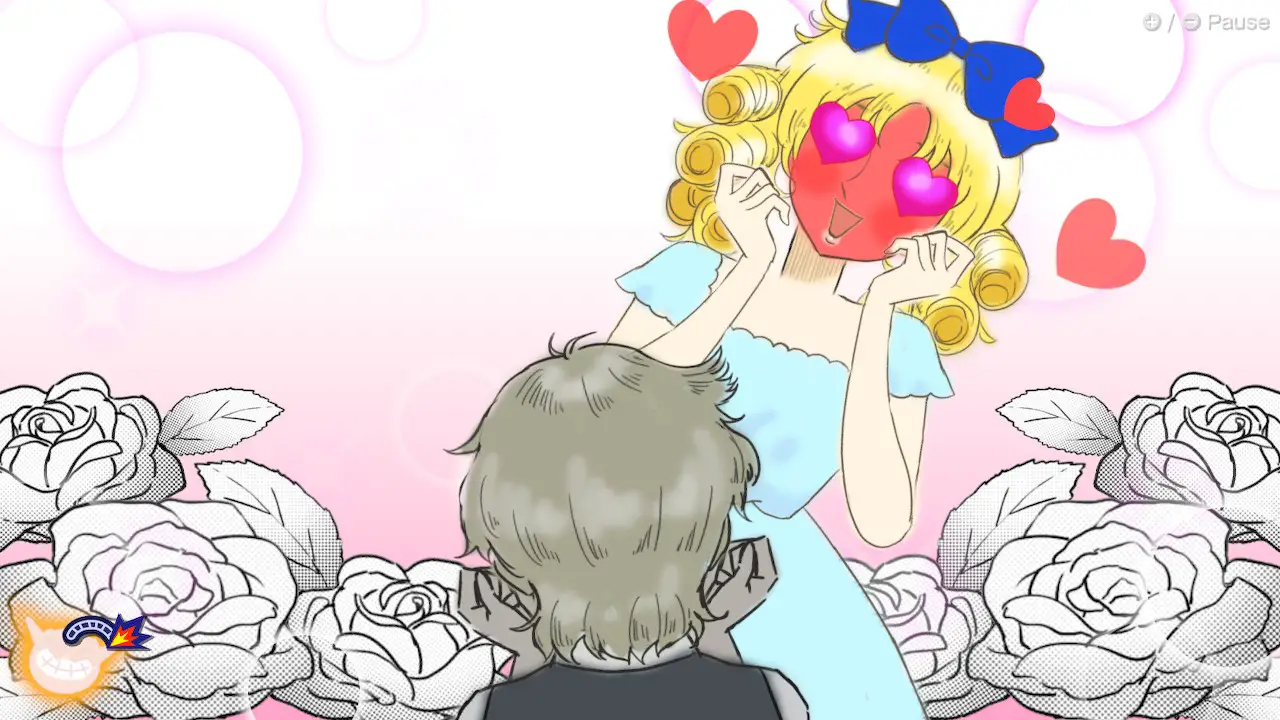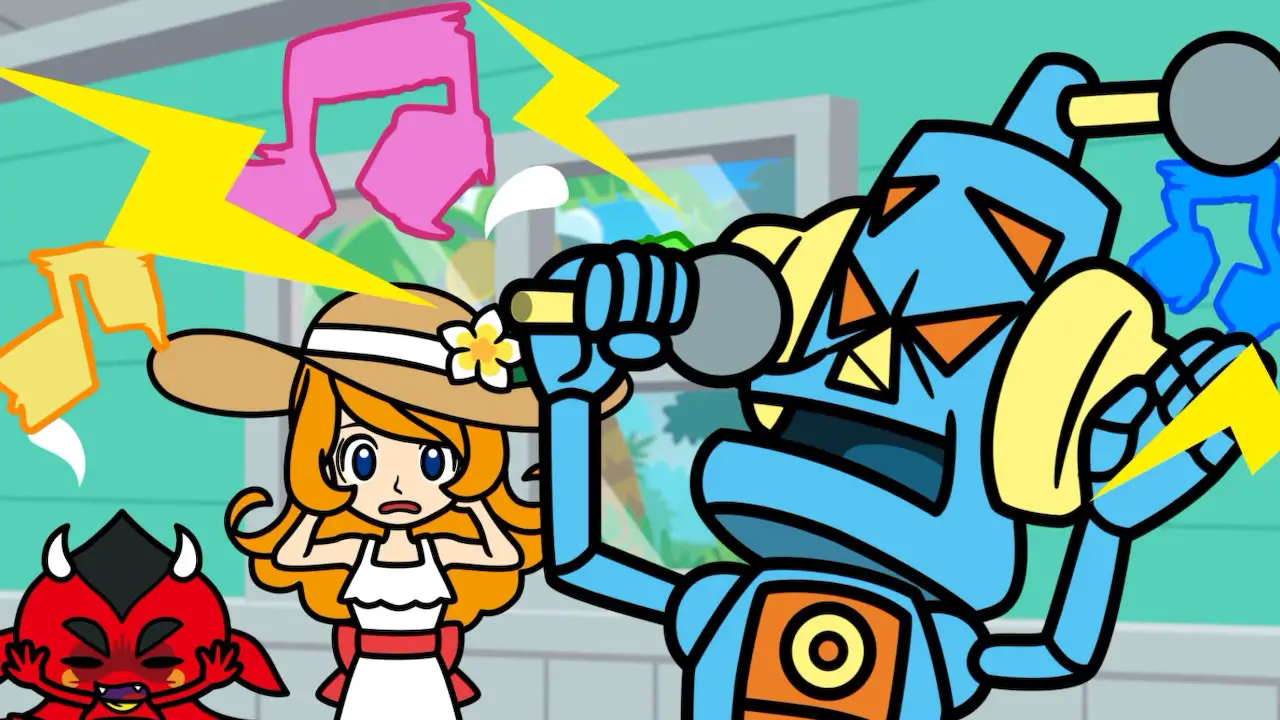
I love everything about WarioWare: Move It! except for actually playing it. That sounds bad, and in some ways it is, yet that’s also kind of the point.
WarioWare games aim to discombobulate – they rapid-fire seconds-long “microgames” in a constant barrage meant to keep you on your toes and eventually knock you off balance entirely. Challenges gradually ramp up in speed and difficulty to the point of intentional unfairness, ultimately dooming you to fail. Thanks to its overall fast-paced nature and sense of humor, WarioWare remains fun to keep trying anyway. The antagonistic slant fits Wario as a character and creates a love-hate relationship that keeps you coming back. Relationships like these rely on proper balance to work long-term, though. Move It! pushes the series’ lovable discombobulation in a more detrimental direction.
As the title implies, this time around Wario wants you to move it. This entry focuses almost entirely on motion controls for its microgames, taking advantage of the Switch’s Joy-Con technology. The premise echoes that of WarioWare: Smooth Moves back on the Wii, and Move It! picks up where its predecessor left off in more ways than one. Given the similarities between the Wii Remote and the Joy-Cons, a direct sequel like this just makes sense.
Despite their similarities, however, Joy-Cons are not Wii Remotes. That quickly becomes apparent while playing Move It!.
The appeal of the Wii Remote lies in the balance it struck between simplicity and seemingly endless potential. Motions that resemble everyday actions can be intuitively understood by most people, which opens doors for a more casual audience to understand how to play. At the same time, motions theoretically allow for infinitely more immersive and complex actions than traditional controllers can provide. The Wii Remote elegantly refreshed games in an exciting way by transferring complex actions into shorthand, recognizable motions that anyone could understand.
Joy-Cons lack elegance. The simplicity of using a single controller gives way to always needing two. How these two devices detect motion differs from how the Wii did it, posing a much higher risk of calibration issues. Joy-Cons were not built for motion controls in the exact same way the Wii Remotes were. Seemingly subtle changes like these appear innocuous at first, yet the issues they cause gradually compound in a way that crosses the one line WarioWare should not. The playfully antagonistic nature of WaioWare’s challenge becomes less “fun” annoying and more genuinely annoying.
When the controls work, they work great. Move It! largely recaptures the same type of fun that Smooth Moves provided. WarioWare consistently delights in its ability to make you see and do weird things in its microgames. Motion controls take that philosophy to the next level by forcing players to literally do weird things with their actual body, rather than being able to hide behind simple button presses. In order to succeed in Wario’s domain, you’ll need to flail your arms wildly, jump around, and bend your body in ways you probably haven’t in quite some time.
Part of the fun of WarioWare comes from anticipating and figuring out what the heck the game wants you to do next. To help the player wrap their head around the possibilities, these motion-based WarioWares toss their microgames under various buckets. Each bucket corresponds to a particular “stance” or “form” that you need to assume with the controller. These stance hints flash before each microgame in order to set your expectations in how to approach it and also likely to help with the calibration of the controller for reading your motions.
As the game progresses, the latter goal becomes especially apparent. The Joy-Cons’ ability to detect the motions that Move It! asks you to do can be, to put it in scientific terms, finicky. A microgame will often fail to function properly at all if you did not enter the game holding your Joy-Cons in the exact right position. Seemingly simple tasks like holding candles or flapping your arms like wings can feel off even when you’re sure you’ve done everything right.
Even though I hesitate to call any of the microgames outright broken, there are a small handful that I was unable to complete consistently no matter how much I practiced them. Admittedly, I already struggle to open drawers in real life because I’m not very smart, but these WarioWare drawers are basically impenetrable fortresses.
Perhaps more than their penchant for finicktivity (real word I created just now), the true problem with the motion controls is the inconsistency of the games themselves. Move It! can toss two different microgames at you that ask you to assume the exact same stance and perform essentially the same motions, yet your skills in the first game won’t necessarily transfer over to the other. Each microgame appears to have its own specific tuning parameters in how it expects you to hold and move the Joy-Cons. If you move outside the range of what the game expects, disaster occurs. After you develop an understanding of what each game wants, the problem mostly disappears.
WarioWare relies on the power of individuality so this isn’t necessarily a surprise. Games these days often require enormous groups of people to make them and as a result they can lose some personality. WarioWare centers itself on individuals. The microgames have historically been, and probably still are, developed entirely by one person each. A wide variety of peoples’ personalities and senses of humor shine here, which adds to the overall charm of WarioWare as a whole. Wario is all about strong personality, so his games should match that. In that way the lack of consistency in controls makes sense, but in this case it is negatively emphasized by the hardware and how the game structures itself.
This problem boils down to a lack of information. The hints for stances do not tell you nearly enough to successfully complete each game. To an extent, every WarioWare game builds in a sense of ambiguity – reacting and figuring them out is part of the experience. Move It! pushes this dynamic further than it should. This is the only WarioWare where I’ve consistently failed microgames through what felt like no fault of my own or been confused about what the game actually wants me to do.
Sometimes the stances can downright mislead you. One of them seems tailored to take advantage of the Joy-Con’s IR sensor, which requires very particular spacing between your hands and the sensor to function properly. On more than one occasion, I got into position to try to figure out how the game wants me to use the IR sensor, only to realize that the microgame didn’t actually use the IR sensor at all. I often failed these ones out of the gate due to my expectations for the stance.
On top of the mental mix-ups, some stances also add degrees of physical discombobulation. The IR sensor stance and a handful of other microgames ask you to drop one of the Joy-Cons from your grip entirely and dangle it with the wrist strap. This game actually marks the first time I’ve ever used the Joy-Con straps at all, which are surprisingly difficult to detach after you’re done with them, but that’s not what I’m talking about. The real danger of these games emerges in the time between finishing that microgame and the next, where you need to scramble to collect the Joy-Con and get back into position for the next stance. After multiple rounds of the microgames speeding up, this turns a unique WarioWare challenge into a cumbersome annoyance.
Ultimately, a game like this simply makes for an awkward fit with the Switch. Smooth Moves successfully relied on this stance hint structure because the Wii Remote allowed for laxer precision and for simpler expectations in terms of how you hold and use the controller. These Joy-Con stances require much stricter performance yet often obfuscate the point of the game.
An option exists to practice microgames individually, it always has in this series, but this time around it almost feels mandatory. That hampers the game and bogs it down. An essential ingredient in WarioWare’s antagonistic balance should be that, much more often than not, you can figure out and complete a microgame within the seconds you are given to do it. Without that conceit, losing moves away from feeling playfully unfair to just plain unfair.
This all adds up to a game that I can’t muster much interest for chasing high scores in. Even if the majority of the games work just fine, it only takes one or two overly unfair curveballs to break the flow. The harsh inconsistency effectively kills one of my favorite parts of the game, and the developers seem to know it.
Compared to its predecessors, Move It! feels relatively empty. Only a handful of post-game stages reward you for reaching a specific score, and once you’ve cleared out those four the game is essentially over. No odd collectibles or challenges incentivize you to keep playing, and there are only an extremely small amount of unlockable mini games. You can’t even score attack the individual microgames.
It’s like the developers acknowledge that the game wasn’t in the shape it needs to be to truly push the player and so they focused their efforts into the multiplayer modes, which lend themselves better to the messier experience. These multiplayer modes and games can be fun too, but I can’t help but be disappointed. Even if the goal were to make this WarioWare more of a party game, that doesn’t excuse the problems with the core experience, particularly as plenty of previous WarioWares balanced efforts between single player and multiplayer much better.
All of that aside, I can’t help but love Move It! anyway. Strong personality forms the key appeal of these games, and Move It! retains that aspect in spades. All of the microgames exude individuality, strangeness, and fun. I’m particularly happy that fully voiced cutscenes return. WarioWare has an extremely fun cast of characters that flourish when brought to life through little animations and movies. Wario scholars will be particularly pleased by some fun cameos and essential tidbits of lore that this game drops.
Wario rules over my favorite corner of the Nintendoverse, so I’m always glad to spend some more time with him. I just wish that for this particular trip that circumstances were better and I had more reason to stick around. As is, Move It! makes for a fun if unfortunately detrimentally discombobulating time.
WarioWare: Move It!
All Right
Everything about Move It! feels like it should work, and when it does it’s a lot of fun. The problem is that doesn't always work. Some rotten apples in the microgame selection and the Joy-Con hardware's awkward fit with the overall concept muddy up an otherwise good time. Given the discombobulating nature of WarioWare, some muddying can be acceptable up to a point, but Move It! occasionally crosses the line from being playfully antagonistic to frustrating for the wrong reasons.
Pros
- Strong personality shines through
- Motion controls immerse you in wackiness
- Charming cutscenes
Cons
- Awkward fit for the hardware
- Detrimentally discombobulating structure
- Lacks incentives to keep you playing

